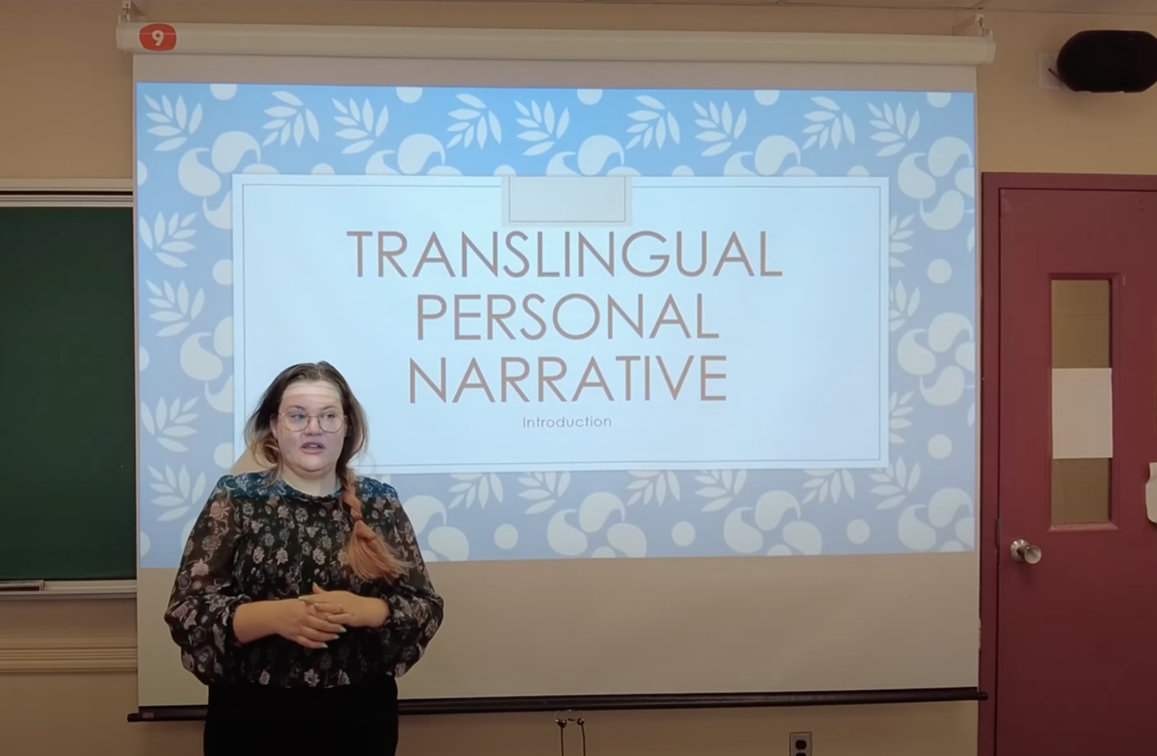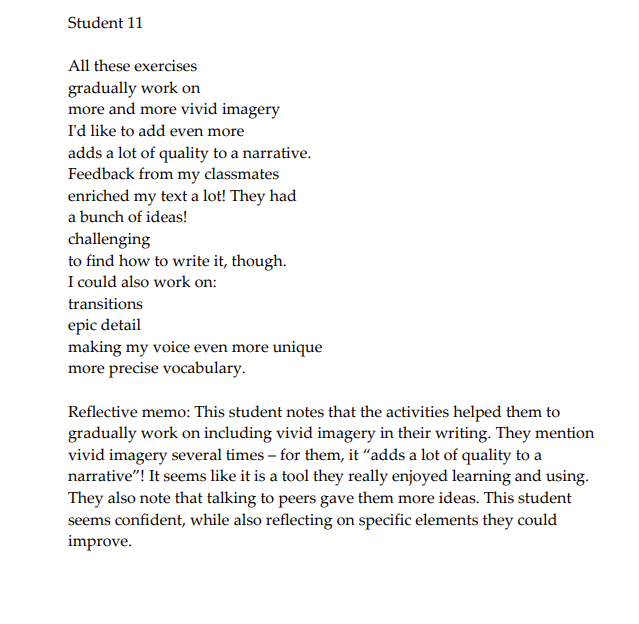April’s action research project
April Passi’s growing interest in action research teaching practices has driven her to delve into its application in her teaching practices.
For several years, she has been teaching the same unit in her advanced English as a Second Language (ELS) course at the Cégep du Vieux-Montréal. The unit focuses on personal narrative writing, where students write stories based on their own memories and experiences. She has been using a translingual approach, allowing students to create their text using multiple languages. For instance, students might refer to or make use of their first language (French, in most cases) to better express some personal experiences in their stories.
Over time, April continued to build and refine this unit. She realized that students appear to enjoy this personal narrative project, but why? She wanted to understand the reasons behind their motivation. What elements of the personal narrative writing unit help them to develop self-confidence?
After conducting some background reading, she decided to start an action research pilot study in her classroom on this personal narrative writing unit during the fall of 2019. The focus was on finding out their source of motivation and evaluating if the translingual approach empowers students in learning English.
Personal narrative writing project
Each week, April would introduce her students to different writing techniques and guide them through different writing workshops in class. Additionally, they would read and analyze some sample personal narratives, which would later serve as mentor texts to help the students craft their own narrative writing.
Throughout the semester, students went through several drafts of their personal narratives. April would either provide feedback on these drafts or hold peer feedback workshops in class, allowing students to collaborate and improve their writing. At the end of the unit, they would submit their final personal narrative and complete a self-evaluation and reflection on the writing process.

April Passi in front of her class, introducing the translingual personal narrative unit.
Data collection and analysis
April collected data using comments from 12 of her students on their personal narratives. She examined their reactions to the work by analyzing their self-evaluation and reflections. To do so, she proceeded with thematic analysis using NVivo software and poetic analysis.
During her analysis, April encountered some instances of conflicting codes, where students expressed both enjoyment and enthusiasm for the project alongside feelings of insecurity as writers. In response, she turned to poetic analysis to look at the data from a different point of view. She discovered that conflicting codes were not mutually exclusive and that students could enjoy the activity and still feel insecure.
April’s findings
The findings from her action research pilot study suggest valuable reasons why the students enjoy and feel engaged in their personal narrative writing. Indeed, the unit on translingual personal narrative writing allows them to:
- practise their writing skills
- tackle a challenging learning experience
- identify their strengths and weaknesses
- increase their confidence
- analyze sample personal essays
- choose a topic that is meaningful to them
- incorporate strong personal emotions (negative or positive)
- have the freedom and time to revise their work before submitting their final product
- better communicate their ideas using multiple languages
- get comments from their peers
April mentioned she can now apply and connect these findings to other areas of her teaching, not just to that unit.
Learnings and takeaways
This action research pilot study highlighted several positive aspects. For instance, using data from authentic classroom materials proved an advantage, as there was no need to ask for additional tasks from students.
Moreover, this approach provided insights into students’ preferences and needs and offered April learning opportunities. Engaging in data management (such as data ethics handling and data analysis), allowed her to acquire new skills and knowledge.
However, it is important to acknowledge some mistakes and drawbacks April has encountered along the way. Initially, the study aimed to investigate translingual pedagogy, but the collected data didn’t adequately address this research question, underlining a poor study design.
Furthermore, the data analysis process proved to be labour-intensive, even with a relatively small dataset of just 12 samples. From these challenges, a few key takeaways emerge:
- seeking assistance with study design beforehand can help ensure a more focused and effective research approach
- conducting the project collaboratively with a team (which may include students, colleagues, or university researchers) can alleviate the substantial workload associated with data analysis
- exploring options to apply for workload reduction through administrative channels can provide the necessary time and support for research endeavours
Following her 2019 study, April made changes to the unit in 2021 and 2022. For instance, she included more discussions and activities around translanguaging to encourage the students to use it more as a literary device in their writing.
Additionally, she included a linguistic portrait activity to promote student reflection on their linguistic identities. She had the students reflect on the languages they knew and how they felt about each language.



